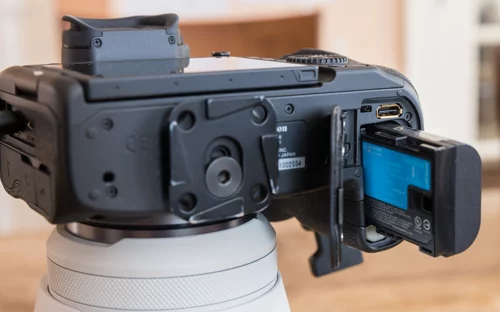Respected Japanese Business publication Nikkei Business conducted a market analysis of Panasonic’s camera division – one of several of the conglomerate’s divisions that are on the dangerous cusp of unprofitability.
 The analysis takes the marketshare figures a bit too literally, as the recent entry of the major camera manufacturers into the full frame mirrorless market causes the mirrorless marketshare numbers to radically realign. In reality, the mirrorless market was the smaller part of the industry, and now that it is almost the only part of the industry, Panasonic’s shrinking share means its gross sales aren’t moving terribly much in either direction.
The analysis takes the marketshare figures a bit too literally, as the recent entry of the major camera manufacturers into the full frame mirrorless market causes the mirrorless marketshare numbers to radically realign. In reality, the mirrorless market was the smaller part of the industry, and now that it is almost the only part of the industry, Panasonic’s shrinking share means its gross sales aren’t moving terribly much in either direction.
The Panasonic share figures also suffer from its having moved upscale to emphasize the full frame video rigs it now makes, a strategy that brings much higher margins at the expense of unit sales. The firm launched a $1700 S5 full frame, 4K-shooting camera that mostly supplanted GH5 sales. Its now-older S1H camera, costing more than twice that, is one of the most respected video shooters in the industry, in good part because of unrivaled software and interface features.
This strategy has been general across the industry in part because the smaller-sensor formats, such as Panasonic’s Micro Four Thirds (MFT) standard, show less relative benefit over shooting video form a recent mobile phone. The MFT mount does work quite adequately for video, and in most cases for stills, but MFT sensors cannot compete with the full frame sensor image quality for image quality when conditions are more stressed, such as low light and long reach circumstances.
Panasonic’s once-popular line of MFT video rigs has been updated slowly, and continue to rely on a much less reliable form of autofocus. A much-anticipated flagship MFT camera is rumored to be coming next month: the GH6. The characteristics of that release will tell a lot about Panasonic’s sense of the market. It may be that the GH line could be relegated to second-string camera units, with the expectation that professionals would use the full frame bodies for primary cameras. If the GH6 emphasises connectivity to YouTube and does little in terms of image quality output and autofocus improvement over the Obama Administration GH5, it will not bode well for the Panasonic’s MFT efforts. The GH5 Mark II, released within the last year, did not foreshadow good things, as it changed very little from the original.
Panasonic’s MFT line would make an awful lot of sense if a non-restrictive supply chain could allow it to offer a sub-$1,000 GH6 that had video autofocus and video image quality at 4K that was almost equivalent to that of the S5. In the absence of their ability to provide this at a significantly lower price, the line may continue to collect more dust. In a time of supply chain limits, the MFT line is likely to be priced significantly close to the full frame line, and this could accelerate the move to the larger sensor format.

 Tilt Shift Calculator
Tilt Shift Calculator POWERING THE EOS R5
POWERING THE EOS R5 R5 Portal
R5 Portal Camera
Camera Lens
Lens Batteries
Batteries Memory Cards
Memory Cards

